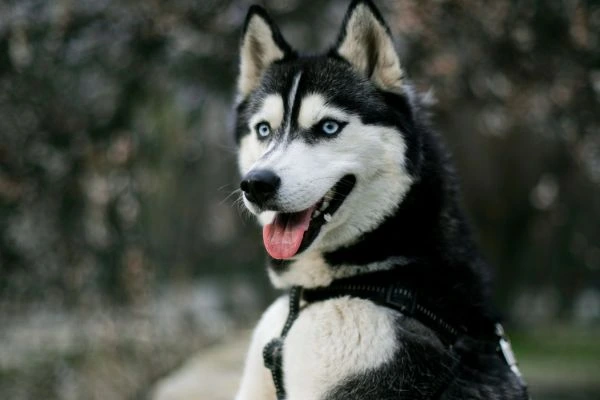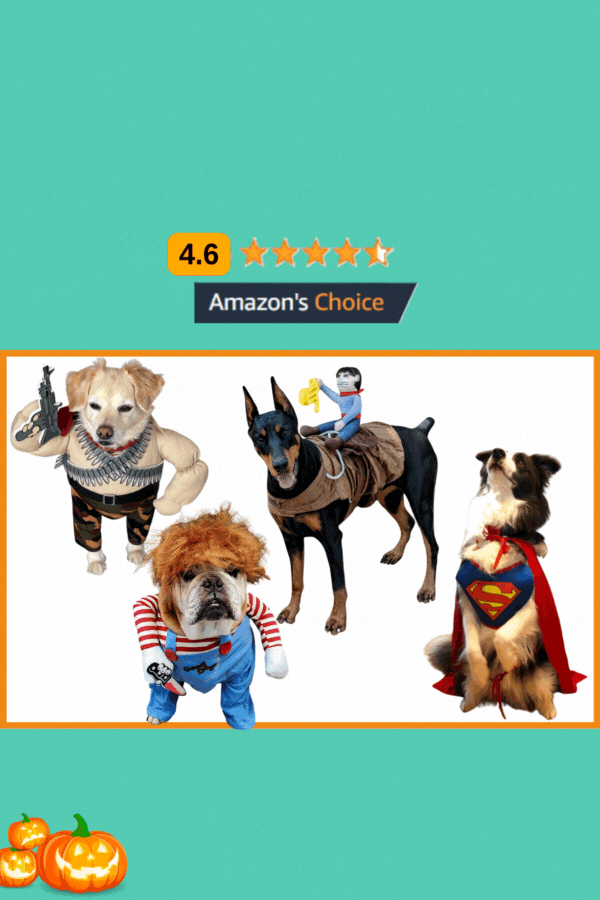Science suggests that wolves and dogs have a common progenitor somewhere in the family tree.
Divergence happened when the individuals got separated by geographical distances.
While climate and other factors played a huge part in the divergent evolution, certain unseen forces were also at work.
Upon careful observation, one can see the striking resemblances between various breeds of dogs and wolves.
In this article, we bring to you a well-researched list of dog breeds that look like wolves.
(Big & Wild) Dogs that look like Wolves
1. Alaskan Malamute
The Alaskan Malamute is one of the oldest Arctic sled dog breeds, known for its power and endurance. With a thick double coat, erect ears, and a strong frame, it bears a close resemblance to a wild wolf.
Malamutes are incredibly loyal but also independent, often requiring a firm hand in training. They were originally bred for heavy freight hauling, not speed, and are impressively strong.
Their wild looks can be intimidating, but they’re usually very affectionate with family. However, they don’t always get along with smaller pets or other dominant dogs. Malamutes require a lot of physical activity and mental stimulation to thrive.
Their vocalizations — howls and “woo-woos” — can be quite wolf-like. Grooming their dense coat is a serious commitment, especially during shedding seasons. Despite their intimidating build, Malamutes are gentle giants at heart.
2. Siberian Husky
Siberian Huskies are perhaps the most well-known wolf-like dogs, often mistaken for wolves by appearance alone. Their piercing blue or multicolored eyes, erect ears, and agile bodies make them strikingly similar to their wild cousins.
Huskies were bred to pull light loads over long distances in freezing temperatures, giving them both speed and stamina. They’re known for their intelligence and stubborn streaks, making consistent training essential.
Huskies are sociable and friendly, but not ideal guard dogs due to their love for people. They’re vocal, energetic, and prone to mischief if bored or under-exercised. Their thick coat needs regular brushing to avoid matting and control shedding.
They enjoy pack life, so they often thrive in homes with other dogs. A husky’s howl can send chills — and delight — down your spine. With the right care, they make wonderfully adventurous companions.
See Also:
3. Czechoslovakian Wolfdog
Originally a cross between a German Shepherd and a Carpathian wolf, the Czechoslovakian Wolfdog was developed as a military breed in the 1950s.
This breed has a strikingly wolfish appearance — long legs, amber eyes, and a lean, athletic body. Unlike most domestic dogs, their behavior closely mirrors wolf pack dynamics, making them a challenge for inexperienced owners.
They are extremely intelligent, agile, and loyal to their pack, but can be reserved with strangers. These dogs require early socialization and consistent, positive training methods.
They’re natural runners with high stamina and do best in spacious, active households. Due to their strong prey drive, smaller animals may not be safe around them.
4. Tamaskan Dog
Bred specifically to look like a wolf, the Tamaskan is a mix of Siberian Husky, Alaskan Malamute, and German Shepherd. Despite its wild appearance, this breed is gentle, highly intelligent, and family-oriented.
Tamaskans are good with children and other dogs, making them ideal for active families. They’re strong and agile, excelling in sports like agility, obedience, and sledding.
They can suffer from separation anxiety if left alone for too long, so early training and companionship are key. With their expressive eyes and dignified stance, they often get mistaken for actual wolves.
Their thick coats require regular grooming, especially during seasonal shedding. They’re not aggressive by nature but will defend their family if threatened. These dogs need both mental and physical stimulation daily.
5. Canadian Eskimo Dog
A powerful working breed from the Arctic, the Canadian Eskimo Dog has an ancient lineage and a wolfish appearance. With thick fur, a robust build, and a proud gait, this breed thrives in cold environments.
They’re not ideal for first-time dog owners and need early socialization. Eskimo Dogs form strong bonds with their people but are wary of strangers.
Their appearance — pointed ears, curled tail, and wild face — is almost indistinguishable from a wolf. This breed is loyal, serious, and thrives with confident leadership.
6. Northern Inuit Dog
Made famous by their role as the direwolves in Game of Thrones, Northern Inuit Dogs were bred to mimic wolves without wolf DNA. They’re intelligent, sociable, and more trainable than other wolf-like breeds.
These dogs form strong attachments to their humans but can be stubborn without consistent training. Their calm demeanor and tolerance make them great companions in the right home.
Though they look fierce, they’re generally friendly and not aggressive. Northern Inuits enjoy group play and do well with other dogs. They require plenty of exercise, mental enrichment, and time outdoors.
Their striking looks — lean body, straight back, almond-shaped eyes — often stop people in their tracks. Grooming needs are moderate but regular brushing is needed to manage their thick coats. With the right environment, they’re a gentle giant full of character.
7. Utonagan
The Utonagan is another designer breed meant to resemble a wolf, developed from Alaskan Malamutes, Siberian Huskies, and German Shepherds. It’s a loyal, intelligent, and gentle breed that fits well in family settings.
Despite their large size and intense appearance, they’re usually non-aggressive and enjoy human companionship. They thrive on structure and need a lot of exercise to avoid restlessness.
These dogs can be shy around strangers and require strong socialization from a young age. The Utonagan coat is thick, double-layered, and comes in various shades of grey, silver, and black.
Their high energy makes them excellent hiking or jogging partners. They dislike being alone and can develop separation anxiety. While they might look like lone wolves, they crave companionship. They combine the majesty of a wolf with the heart of a loyal friend.
8. Saarloos Wolfdog
The Saarloos Wolfdog was created by crossing a German Shepherd with a European wolf in the 1930s. This breed leans heavily into its wild ancestry in both looks and personality.
Saarloos dogs are cautious, introverted, and not suited to busy or chaotic households. They bond deeply with one or two people and are not particularly affectionate with strangers.
They’re highly independent and don’t respond well to traditional obedience training. This makes them best suited to very experienced handlers who understand canine body language and natural behavior.
Their graceful, agile build and intense stare make them incredibly wolf-like. They’re not aggressive but may be fearful if not properly socialized. Saarloos Wolfdogs are best for people with a quiet lifestyle and lots of space. When respected and understood, they’re intensely loyal and deeply intelligent.
9. Greenland Dog
The Greenland Dog is a hardy, ancient sled dog breed closely related to the Canadian Eskimo Dog. This breed has a wild, unpolished look, with a broad head, powerful build, and dense fur.
Bred for endurance in arctic conditions, they’re extremely resilient and self-reliant. Greenland Dogs are pack-oriented and work well in groups, but can be dominant. They’re not ideal for novice dog owners and need assertive but kind leadership.
They’re typically used to working rather than lounging and require space to roam. Socialization from an early age is vital to avoid aggression or shyness. These dogs have a high prey drive and are best kept in secure enclosures.
Their independence and toughness make them wolf-like not just in appearance, but also in spirit. With proper handling, they become loyal, driven, and highly capable companions.
10. Shikoku Dog
Hailing from Japan, the Shikoku is a medium-to-large breed that resembles a small wolf or wild dog. Bred for hunting in mountainous terrain, it’s agile, brave, and fiercely independent.
Shikokus have a sharp, alert expression, triangular ears, and curled tails, giving them a primitive, wild look. They are loyal to their family but tend to be aloof with strangers. Shikokus require consistent training and do best with confident owners.
They are very active and enjoy outdoor exploration and mentally stimulating challenges. This breed is incredibly clean and has a self-grooming tendency similar to cats. Though they are quieter than other breeds, they are always on high alert.
These dog breeds look more docile and less feral than their wolf counterparts.
When you bring home one of these breeds, it is important for you to understand their behavior.
While they can be domesticated, they still have the hunting instincts alive in them.

Nikita Rout is a passionate content writer at HowItSee.com, where she explores the wonders of animals, nature, and the curious questions that spark our imagination. With a love for research and a knack for simplifying complex topics, she brings clarity and creativity to every article she writes. When she’s not writing, you’ll likely find her reading about animal behavior or coming up with unique pet name ideas.

